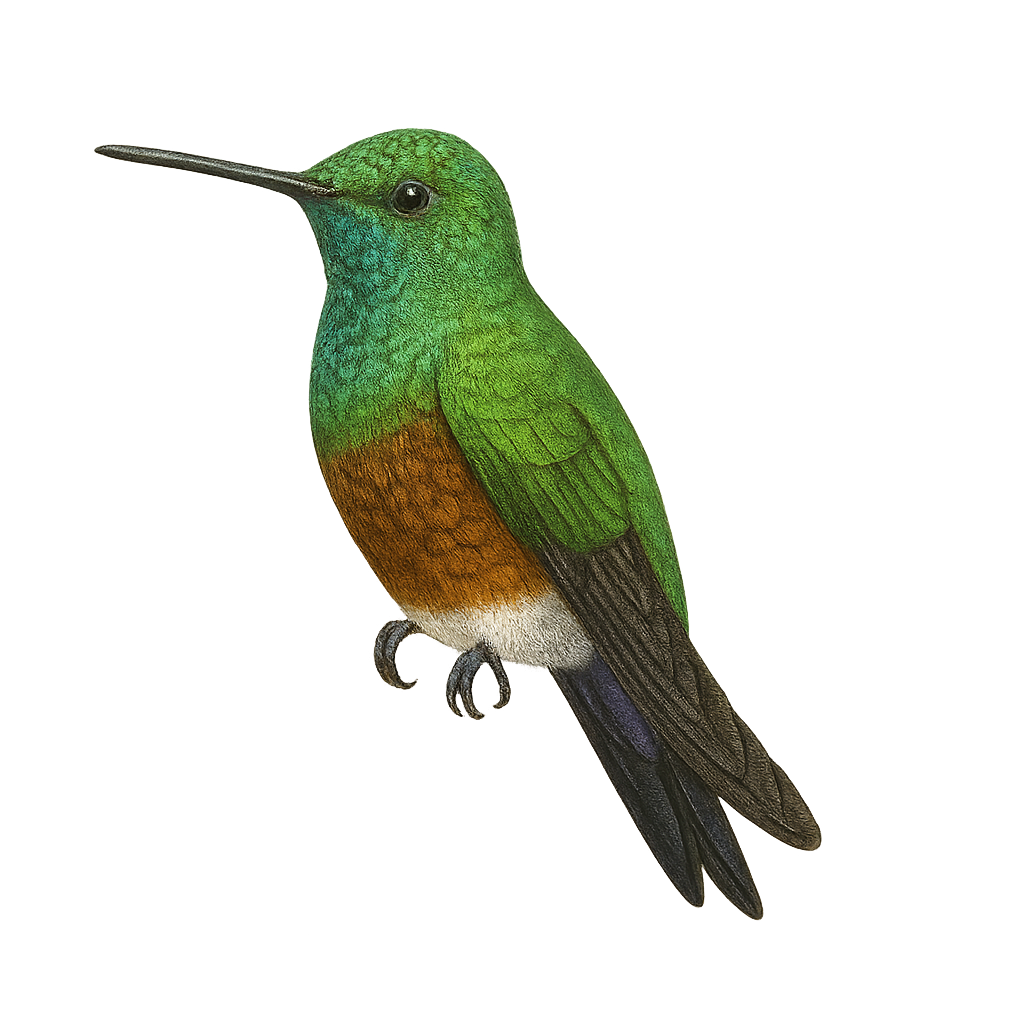Your wildlife photography guide.
Explore the coppery-bellied puffleg in detail, study its behavior, prepare your shots.
Where to observe and photograph the coppery-bellied puffleg in the wild
Learn where and when to spot the coppery-bellied puffleg in the wild, how to identify the species based on distinctive features, and what natural environments it inhabits. The WildlifePhotographer app offers tailored photography tips that reflect the coppery-bellied puffleg’s behavior, helping you capture better wildlife images. Explore the full species profile for key information including description, habitat, active periods, and approach techniques.
Coppery-bellied Puffleg
Scientific name: Eriocnemis cupreoventris

IUCN Status: Near Threatened
Family: TROCHILIDAE
Group: Birds
Sensitivity to human approach: Suspicious
Minimum approach distance: 5 m
Courtship display: February to May
Incubation: 15-17 jours
Hatchings: February to June
Habitat:
Cloud forests, shrublands
Activity period :
Primarily active during the day, with peak activity in the morning and late afternoon.
Identification and description:
The Coppery-bellied Puffleg, Eriocnemis cupreoventris, is a small, captivating bird endemic to the Andes in Colombia and Venezuela. This hummingbird is distinguished by its striking plumage, with a coppery belly that shimmers in sunlight. Males display metallic sheens on their backs and heads, while females have more subdued tones. Measuring about 10 cm in length, this bird is an essential pollinator in its natural habitat. It primarily inhabits cloud forests and shrublands at high altitudes. Its fast and agile flight allows it to feed on the nectar of tubular flowers, playing a crucial role in pollination.
Recommended lens:
400 mm – adjust based on distance, desired framing (portrait or habitat), and approach conditions.
Photography tips:
To photograph the Coppery-bellied Puffleg, it's advisable to use a 400mm lens or longer to capture the details of its striking plumage without disturbing it. Opt for times of the day when natural light is soft, such as morning or late afternoon. Be patient and wait for it to perch on a flower to feed. Use a tripod to stabilize your camera and avoid motion blur. Finally, maintain a safe distance of at least 5 meters to avoid disrupting its natural behavior.
The WildlifePhotographer App is coming soon!
Be the first to explore the best nature spots, track rutting seasons, log your observations, and observe more wildlife.
Already 1 439 wildlife lovers subscribed worldwide

